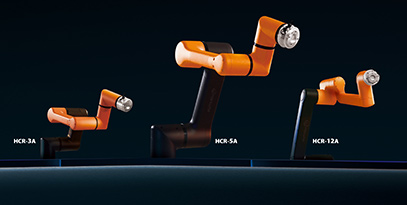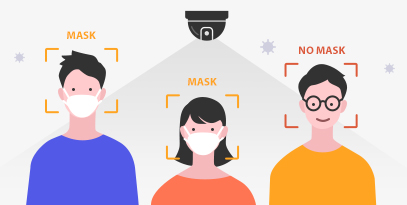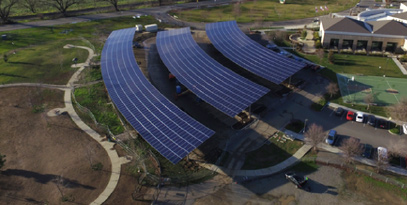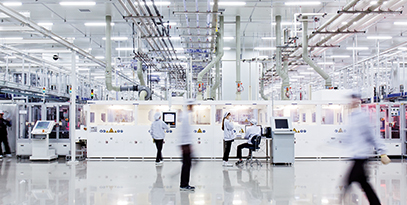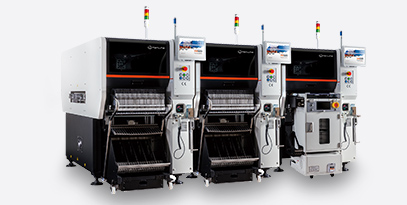HCR Advanced is Your Newer, Smarter, Handier Assistant
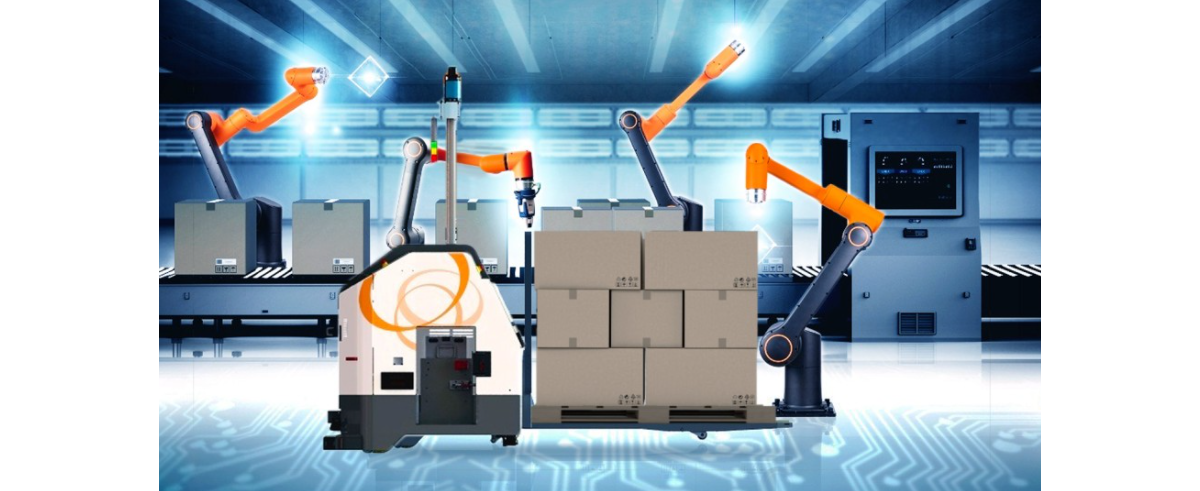
Hanwha Collaborative Robots work closely with humans to help improve productivity.
Human hands are amazing appendages, capable of exerting great force and ultra-fine dexterity in all manner of tasks to create everything from industrial machinery to cutting-edge microtechnology and fine art. But even they can occasionally use a helping hand, so to speak.
Enter collaborative robots (cobots), mechanical assistants that use articulated arms with swappable appendages to handle eclectic tasks in a wide variety of industries. Rather than taking the place of humans, cobots supplement them by taking over work that requires precision and repetition so human workers can be freed up to focus on tasks that require creativity and critical thinking.
On this front, cobots are making a positive impact on workplaces and have quickly proven themselves to be indispensable tools and partners, with humans who work alongside cobots reporting improved job satisfaction since they can share their workload with a cybernetic partner. In fact, a study from MIT showing that human-cobot teams can be 85% more productive than humans or robot working separately.
Cobots can now be in the automotive, electronics, semiconductor, shipbuilding, food, and pharmaceutical industries as well as many others. They’re also showing themselves to be huge boons in the e-commerce industry, helping cut order-processing times from one hour to 15 minutes in some warehouses. They can even be found handling food prep and serving at eateries and may even become handy home assistants in the domestic sphere. The capabilities and benefits cobots deliver translate into booming business. The global cobot market exceeded USD 1 billion in 2020 and expected to rise exponentially to be worth USD 7.9 billion by 2026.
Programmable for pin-point precision and proximity

From left to right, the HCR-3, HCR-5, and HCR-12.
At the forefront of this rapidly growing industry is Hanwha Robotics, a brand of Hanwha Corporation, which produces the Hanwha Collaborative Robot (HCR) series. Combining pin-point precision with cutting-edge AI technology, HCRs work seamlessly in proximity with their human operators.
Hanwha Corporation designed the three basic HCR models (HCR-3, HCR-5, and HCR-121) with ease-of-use in mind. Rather than typing in lines of computer code to set tasks for an HCR, operators simply need to string together chains of preprogrammed commands picked from a menu. Different heads and appendages can be swapped in and out without the need for specialized tools. These allow HCRs to be reset quickly to handle a whole host of tasks that range from the mundane – such as product sorting – to sophisticated – such as measuring aerospace components in units finer than a human hair. They are also fitted with proximity sensors that bring HCRs to an immediate halt should a human get too close.
To make cobots even easier to use, Hanwha Corporation offers prepackaged solutions for operators where HCRs come with the attachments and programming needed to fulfill specific tasks right out of the box. These include “Pick and Place,” which equips HCRs to pick up objects and move them to precise locations. This functionality is vital in activities such as metal processing and furniture manufacturing, where uniformity is vital.
HCRs can also be fitted with packages such as “Polishing” – which allows an HCR to polish large batches of metal that are impractical to handle manually – and “Dispensing” – which applies exact amounts of adhesives, silicone, or paint.
| 1 HCR designations indicate the maximum weight limit, in kilograms, of each model. |
Customizable cobots add capabilities and convenience
-
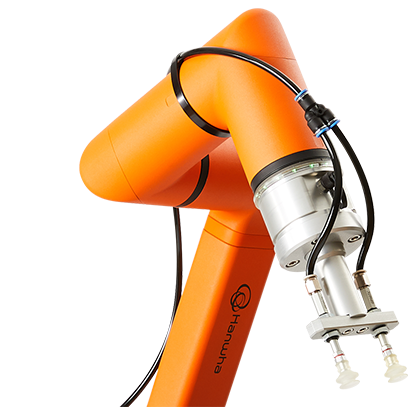 HCR-3A Payload : 3 kg, Reach : 630 mm
HCR-3A Payload : 3 kg, Reach : 630 mmA compact robot designed for confined spaces.
Six axes of rotation allow it to approach a target from any angle,
making it ideal for driving in screws, polishing surfaces,
and inspecting components. -
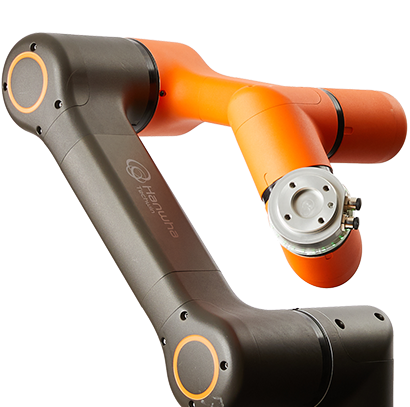 HCR-5A Payload : 5 kg, Reach : 915 mm
HCR-5A Payload : 5 kg, Reach : 915 mmA refinement of Hanwha’s first-ever collaborative robot.
It is meant to work side-by-side with humans. -
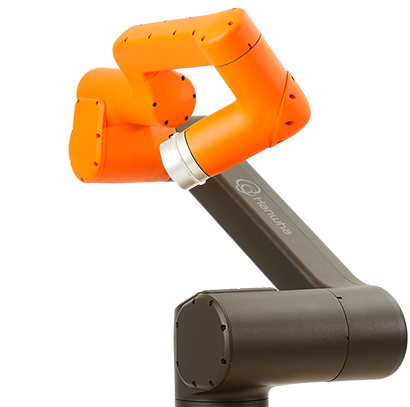 HCR-12A Payload : 12 kg, Reach : 1,300 mm
HCR-12A Payload : 12 kg, Reach : 1,300 mmHanwha’s most powerful cobot.
It is primarily used for metalworking and automotive production,
often in repetitive tasks that require absolute precision.
Each HCR Advanced offers unique specializations suited to different industries
In 2020, Hanwha Corporation revamped the HCR by rolling out the HCR Advanced series – consisting of the HCR-3A, HCR-5A, and HCR-12A – and a slew of new add-ons. Building on the capabilities and convenience of the HCR, HCR Advanced offers a whole host of new features that makes workplaces even more efficient.
New accessories for the HCR Advanced include a force torque sensor – to accurately monitor and regulate linear and rotational forces being exerted – and a gripper attachment as dexterous as a human hand. These simply slot onto the end of an HCR Advanced’s arm and be ready to use immediately, without any need to plug in cables or screw in bolts.
The HCR Advanced represents a step forward in cobot technology.
Hanwha’s latest cobots can also come with Advanced Solutions, additional modules that allow operators to customize their HCR Advanced to better suit their needs.
For instance, the “Mobility” package provides the HCR Advanced with the combined capabilities of Hanwha’s Laser-Guided Vehicle and Autonomous Mobile Robot in smart factory settings to autonomously shift heavy loads and work around the cobot’s payload limits. Meanwhile, “Robot Positioning Compensation” makes it easier to reposition the HCR Advanced and enhance its accuracy. The package also features the “Robot Monitoring Service”, which uses camera technology from Hanwha Techwin to keep a watchful eye over the HCR Avanced's workspace and sound warnings in the event of imminent danger.
Other Advanced Solutions include “Robot AI 3D Vision,” which adds a 3D camera to the HCR Advanced so that it can scan its surroundings and use deep learning technology to optimize its movements, and “Robot Visual Safety,” which tracks the location of human operators. Should someone step into an HCR Advanced’s “yellow zone” it will automatically slow its movements to lower the risk of collision. If someone steps into the cobot’s “red zone”, it will stop completely to ensure workplace safety.
Accelerating automation advancement
As the HCR Advanced Solutions starts going out to customers around the world, Hanwha Corporation continues researching and developing cobot technologies to further refine cobots’ contributions to the workplace. Soon Hanwha Corporation envisions the HCR and HCR Advanced entering a whole host of new settings, such as helping prepare and serve food in eateries and even becoming a handy home assistant.
Wherever its cobots find work, Hanwha Corporation will continue building on the shift toward automation that has been accelerating during the Fourth Industrial Revolution. It aims to play a role in shaping how the next generation of cobots will maximize productivity. As people and workplaces find themselves needing to maintain social distancing and turn to automated solutions, cobots will continue proving their woarth by taking over tasks that require speed, repeatability, and precision in commercial and industrial settings.


